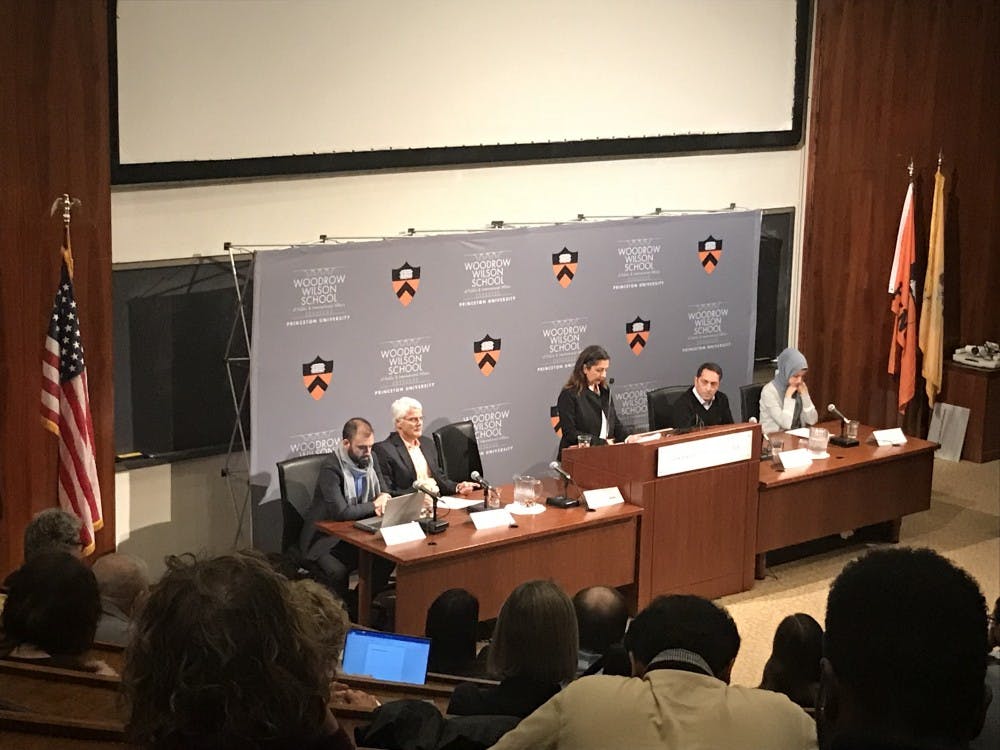
In the wake of rising political tensions in Iran, the Wilson School co-sponsored a panel with the Sharmin and Bijan Mossavar-Rahmani Center for Iran and Persian Gulf Studies and the Department and Program in Near Eastern Studies to discuss future implications of the recent protests in Iran that took place this past December and January.
Visiting University scholar and former White House foreign policy consultant Dr. Banafsheh Keynoush moderated the event.
“Protests have become a daily reality in Iran, and the state is catching up,” said Keynoush during her introduction of the panel. “Reform in Iran has political boundaries that are being stretched, and Iran’s foreign policy may or may not be impacted by internal changes in the country.”
The panel featured four speakers from various disciplines, although a fifth scheduled speaker, Narges Bajoghli, a postdoctoral research associate from Brown University, was unable to attend.
Department of Near Eastern Studies lecturer Nura Hossainzadeh was the first speaker and focused on how expectations for an Islamic republic shape contemporary Iranian politics.
“Debates go back to the early days just after the revolution,” said Hossainzadeh, again referring to the overthrow of the Pahlavi dynasty in 1979.

Hossainzadeh focused on the controversy that has arisen over “the position of the Guardian, the Assembly of Experts, and the Guardian Council.”
Hossainzadeh attributed part of the unrest in Iran to discontent over the degree of power held by Ali Khamenei, the Guardian Jurist and Supreme Leader.
Hossainzadeh referred to the Iranian Revolution and Ruhollah Khomeini, the leader of the revolution and Iran’s first Supreme Leader, and said, “Reformists often point out that Khomeini didn’t give this authority explicitly to the Guardian, but to the government as a whole, acting through the proper legislative and executive ordinance, which includes a popularly elected Parliament and President.”
Following Hossainzadeh was Luciano Zaccara, a visiting research scholar from Qatar University. Zaccara displayed numerous tables and graphs from recent municipal, parliamentary, and presidential elections.

“[President Hassan Rouhani] obtained over five million more votes in 2017 compared to what he obtained in 2013,” Zaccara explained. In the following slide, Zaccara noted that reformists also gained a comparatively large majority of seats in Iran’s municipal division in 2017.
Djavad Salehi-Isfahani, a visiting research scholar at the University and an economics professor at Virginia Tech, spoke after Zaccara and presented his economic research on Iran.
“Do these protests indicate that a larger uprising is in the works?” began Salehi-Isfahani. “This is the question that has been asked in the digital sphere, and it is asked every time there is a protest in Iran.”
Salehi-Isfahani explained that since Iran has become a republic, the country has faced bank failures due to its significant dependence on oil. However, he also claimed that Iran’s economic destitution has often been exaggerated by international media.
“The New York Times had an op-ed that claimed that 40 percent of Iranians are living under poverty, and if you Google that, many articles come up with the same result,” said Salehi-Isfahani. “But this is not true.”
Salehi-Isfahani referenced a study from the World Bank, which found that the poverty rate is actually 9.5 percent. He also suggested that “there is a tendency to exaggerate because it gets a lot of hits on your website.”
University associate research scholar Amin Moghadam was the final speaker for the panel. Moghadam focused on geographic studies conducted about Iran, specifically localized issues.
“I want to point out two socio-spatial phenomena,” began Moghadam. “The first is borders, and the second is the geography of shopping malls and how we can link them to the issue of spatial injustice.”
Moghadam projected a map of Iran on the screen, using a pointer to indicate that “peripheral areas” have higher unemployment rates, before switching to another slide that showed the distribution of large shopping malls throughout the country.
He explained that these shopping malls are the result of neoliberal urban policies that were put in place at the end of the 1990s. The malls aimed to maximize land value and transform financial assets, without having any socio-economic repercussions.
Relating these ideas back to the current unrest in Iran, Moghadam suggested that the shopping malls were leading to what geographers call ‘spatial injustice,’ since “people do not necessarily have the purchasing power to benefit from these places.”
At the conclusion of the presentations, Keynoush opened the floor for audience members to ask the speakers about a variety of issues, from Iran’s hyperinflation and the low exchange rate of its currency to international pressure on Iranians to escalate the protests into an overthrow of the current government.
The next conversation about Iran in the discussion series is entitled “Shias in the Gulf Monarchies and their Relations with Iran,” which will be held in 300 Wallace Hall on March 1 at 12 p.m. This discussion will be led by Laurence Louër, Associate Professor of Sciences at the Center for International Research in Paris.
The panel took place in the Arthur Lewis Auditorium in Robertson Hall at 4:30 p.m. on Thursday, Feb. 22.







